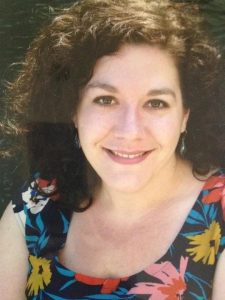Hi!
In case you didn’t know, my first book Why We Love Pirates: The Hunt for Captain Kidd and How He Changed Piracy Forever will be published on November 24 in paperback, ebook, and audiobook! I’m publishing it with the independent press Mango Publishing.
My book is intended for a “popular audience,” which means it’s accessible to masses rather than just the academic world. It is pretty much a redo of my PhD thesis, which was no easy feat. So I thought I’d tell you all how I managed to do it.
- I decided I wanted to discuss how and why pirates became such popular figures throughout history up until today. I decided to use the pirate Captain Kidd as my case study because his manhunt was the first one to be live-documented in newspapers around the Atlantic world.
- I printed out each chapter of my PhD one at a time and went through it with a pen section by section, line by line. I made notes about what areas were the most important, fit in thematically, and had excellent primary source material.
- Once I finished doing this, I took note of all the major themes and decided to base my chapters on those and created relevant titles. From here I was able to outline the chapters so I knew what to include and what to expand upon.
- The first thing I did in each chapter was rewrite relevant chunks of my dissertation into a more accessible tone. This meant taking away any secondary analysis and rewriting sentences until I could read them aloud easily.
- This took me a few months to do and once that was finished, I had half of my book draft done. Now it was time to expand the relevant information. This meant more research. I was a bit strapped for research since I didn’t have access to every database I had in London, but I had LOADS of primary research saved and ready to go. I combed through everything and expanded each area that needed and wanted more details.
- Once I had a whole draft written, I printed out each chapter one at a time and once against attacked them with a pen. Here I reorganized paragraphs, struck out sentences, changed words around, and made notes of areas that were repetitive or needed more information. I also checked for spelling and grammatical errors.
- Once I’d done that with each chapter, I went about and did all of the edits.
- Two close friends agreed to be “beta” readers of sorts. One was really good at being nitpicky with mechanics while the other was more interested to see how readable it was. They both gave me excellent feedback and suggestions, which I applied generously to my book draft.
- Once that was done it was time to send the draft off to my editors.
- Over the next few months, they sent me back drafts with edits for me to approve and do. By July it was done and all that was left for me to do was to go over the final proofs. Yay!
I did all this in a pretty short turnaround time – about 8 months. August – April. So how did I do it?
The first half of my draft was finished by that December. Then the harder part started. I was working full-time as a private school teacher and I just started teaching a couple of night classes at the local community college. Not to mention I was in a choir and had rehearsal one evening a week! This meant I had LOADS of late nights.
To complete the draft, I had to get to a certain word count and leave myself ample time to edit and rewrite. I set myself a goal to have the whole draft written by the end of February and gave myself a very strict daily word count goal that I noted in a notebook every night. There were any nights where I was up until at least 2 AM and then had to be up at 6 for work. But I did it. I made the word count goals.
Then the pandemic hit and everything shut down. No more choir rehearsals. No more night classes. No more going into work. All teaching was done online and this left me time to focus on editing. The first draft was written and now I suddenly had a lot more time on my hands to do the edits and submit the draft to my editor by the April 30 deadline.
And there you have it! That’s how I managed to turn my PhD into a book. It was NOT easy but overall I’m very pleased with how it turned out. I hope you enjoy reading it!


